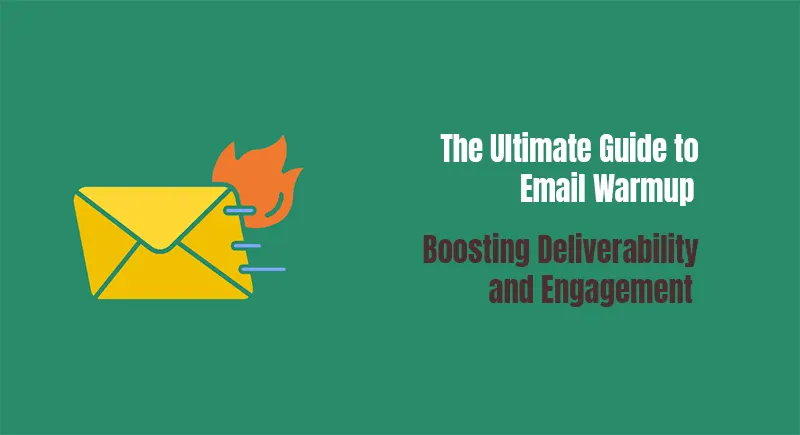In today’s digital world, email marketing remains one of the most effective tools for businesses to reach their audience. However, even the best-crafted email campaigns can fall flat if emails end up in spam folders or if their engagement is low. Enter email warmup, a strategy designed to ensure emails land in inboxes rather than spam and that recipients are more likely to engage with them. Here’s a comprehensive guide on email warmup, why it matters, and how to do it effectively.
What is Email Warmup?
Email warmup is the process of gradually increasing the volume and frequency of emails sent from a new or dormant email address. This strategy helps to build a positive reputation with Internet Service Providers (ISPs) by demonstrating consistent, legitimate, and valuable engagement with recipients. Essentially, email warmup shows ISPs that your emails are from a trustworthy sender, making it less likely for your emails to be marked as spam.
Why Email Warmup Matters
Without a proper warmup, sending a large volume of emails from a new or cold email address can trigger red flags with ISPs. When ISPs detect an influx of emails from an unestablished sender, they may assume the emails are spam and prevent them from reaching inboxes. Proper email warmup allows you to build a reputation over time, increasing the chances of reaching your recipients’ primary inbox and reducing the likelihood of your emails being marked as spam.
Who Needs Email Warmup?
Not every email sender needs an email warmup. Here are situations where it’s crucial:
- New Email Domains: If you’ve recently registered a new domain, it has no email sending history or reputation. A warmup is essential to establish trust.
- Long-Idle Accounts: If an email address has been inactive for a while and is suddenly used to send many emails, it can appear suspicious to ISPs.
- High-Volume Senders: When scaling up your email volume, warming up is essential to avoid deliverability issues.
How to Warm Up Your Email Address Effectively
To maximize your chances of successfully warming up an email address, follow these steps:
1. Start Slowly
Begin by sending a small number of emails, and then gradually increase the volume over a period of days or weeks. For instance, start by sending 10-20 emails per day, and gradually increase as you see positive engagement (such as opens and replies) from recipients.
2. Prioritize Quality Over Quantity
Rather than blasting out emails, focus on sending messages to a smaller group of high-quality, responsive contacts. Engage with recipients who are likely to open and interact with your emails, as this helps to build a positive reputation with ISPs.
3. Leverage Email Warmup Tools
Tools like Lemwarm, Mailshake, and GMass automate the warmup process by sending emails at specific intervals, increasing volume incrementally, and even simulating engagement (such as opens, replies, and clicks). This automation can save time and make the warmup process more efficient.
4. Track Your Metrics
Pay close attention to metrics such as open rates, click-through rates, and bounce rates. A high bounce rate could indicate that some of your email addresses are outdated or invalid. A low open rate could suggest that your emails aren’t resonating with recipients or are being marked as spam.
5. Maintain Consistent Sending Behavior
Once you’ve warmed up your email address, maintain a consistent sending schedule. Large spikes or sudden drops in volume can raise red flags, even after a successful warmup. Aim to keep your sending pattern as consistent as possible.
Best Practices for Successful Email Warmup
- Use a Dedicated IP Address: If possible, consider using a dedicated IP address for high-volume sending. This helps you control your sending reputation without being affected by the actions of other senders sharing the same IP.
- Authenticate Your Emails: Ensure that your emails are properly authenticated with SPF, DKIM, and DMARC records. These records help ISPs verify that your emails are legitimate and less likely to be spam.
- Personalize Your Emails: Emails with personalized content tend to perform better, with higher open and engagement rates. Including the recipient’s name or relevant content increases your chances of building a solid sender reputation.
- Monitor Spam Complaints: Occasionally, recipients may mark your emails as spam. Keep an eye on spam complaints, and be proactive about removing unengaged or uninterested subscribers from your list.
The Benefits of a Properly Warmed Up Email Address
A well-warmed email address offers numerous benefits, including:
- Higher Deliverability: More of your emails will reach inboxes rather than spam folders, maximizing your reach.
- Improved Engagement: Emails in the inbox are more likely to be opened, read, and acted upon by recipients.
- Better Sender Reputation: Over time, a positive reputation with ISPs means you can maintain a higher sending volume without issues.
Final Thoughts
Email warmup is a valuable process for ensuring that your emails reach the inbox and engage recipients. Whether you’re using a new email address or reactivating a dormant one, a thoughtful approach to warmup can make all the difference in the success of your email marketing campaigns. By following best practices and leveraging the right tools, you can build a solid sender reputation and optimize your email deliverability.
Warmup might take time, but the results are well worth it—happy sending!








